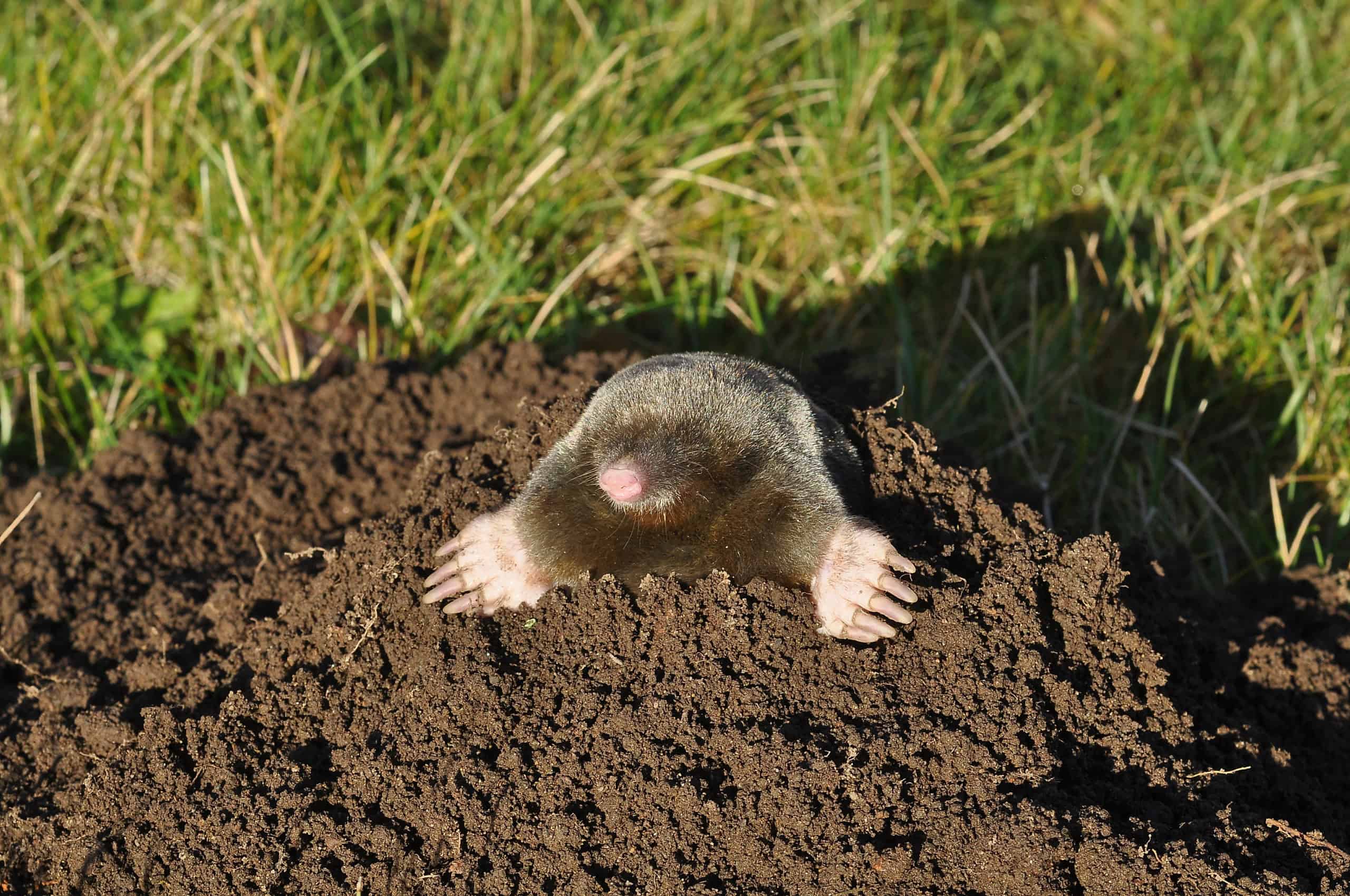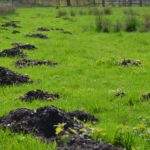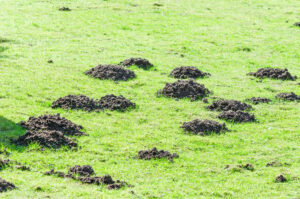
The Eastern Ground Mole is the most common mole that plagues Ohio yards. This tiny pest is a nuisance to homeowners everywhere, and it can cause serious damage. Lawns, gardens, and even sidewalks aren’t safe once a family of moles moves into your yard.
For most homeowners, the key to saving your yard from mole damage is to prevent them from appearing in the first place. There are many do-it-yourself methods and mole prevention tactics that homeowners can take to make their yards inhospitable to moles. Keep reading for our top list of mole prevention methods, as well as our suggestions for how to get rid of moles for good if you are dealing with an infestation.
Make Your Yard Unattractive to Moles
Most ground mole prevention methods involve making your yard unattractive to moles in the first place. If feeding, breeding, and digging are difficult in your yard, any moles that check out your property will be more likely to choose your neighbor’s yard instead. With those three things in mind, these are the top methods to making sure that ground moles don’t call your yard home.
Remove Their Food Sources
Moles feast on grubs, worms, and other small insects that live among the root systems of your plants and in your lawn. Eliminating insects from your yard is the first step to making sure that moles can’t call your property home. You can purchase earth-friendly beneficial nematodes and spread them throughout your yard to create an inhospitable ecosystem for grubs. Nematodes are microscopic predatory worms that hunt down pest insects, but they’re harmless to humans, plants, and pets.
You can also purchase a milky spore mix to spread through your garden. Milky spore disease is a naturally occurring pathogen that is harmless to plants but kills insect larvae. Milky spores do take several years to take effect, but they can be a worthwhile investment to prevent grubs and moles from taking refuge in your yard.
Apply a Mole Repellent
If you’re still working on eliminating mole food sources, you can also spread a homemade repellent throughout your lawn and garden to make sure moles stay away. Castor oil is an effective mole repellent, as it causes digestive upset in moles and makes them less likely to stay in your yard. Mix three parts castor oil with one part dish soap, and then mix four tablespoons of the mixture into a gallon of water. Soak mole tunnel entrances in the water and oil mixture and the moles will eventually move on.
There are also commercial repellents in liquid or granule form available for purchase. Be sure to follow all label instructions carefully when using a commercial repellent.
Create Barriers and Obstacles
You can use landscaping to your advantage to prevent moles from moving into your yard. Create barriers at the edges of your property that make it difficult for moles to dig into your yard. If your yard or garden isn’t easy to get to, the moles will move on to somewhere else, instead.
You can create barriers with several methods. Plants such as daffodils, marigolds, or other allium family plants have a strong smell that is repulsive to moles. Plant these along the edges of your garden or lawn for a beautiful and effective barrier.
Trenches are another type of barrier you can use, as well. Dig a trench around your garden approximately 6 inches wide and 2 feet deep, and then fill the trenches with pebbles or line them with mesh. These trenches will be difficult, if not impossible, for moles to traverse.
Make your Yard Unsafe for Moles
The final step to DIY mole prevention is to make your yard unsafe or difficult for them to live in. Keep your lawn trimmed short so the moles don’t have anywhere to hide. Avoid using mulch or overwatering your lawn, as moles prefer moist soil to dig in. If the soil is too dry, they will have a more difficult time establishing their home tunnels. Drier soil also means fewer earthworms, which are another mole food source.
Get Rid of Existing Moles
If you’ve taken all the preventative methods and you’re still dealing with moles, or you’re trying to fight an active infestation, you will need to find a way to remove the existing moles from your yard. We recommend calling in a professional mole removal service to deal with your infestation, however, there are some DIY methods available to homeowners.
Baiting/Poison
Commercial mole bait is typically shaped like a worm or other mole food source but is laced with a poison that will kill the mole after it has been consumed. Mole poison also comes in a gel form that can be deposited into their tunnels. When a mole comes in contact with the gel, it causes internal blood coagulation, and the mole will die quickly.
Poison gas is also available as an option for killing moles. It is available in a granule or tablet form that you can deposit into the mouth of a mole tunnel. It then reacts with the soil to create a poison gas that will kill the moles as they traverse their tunnels.
Trapping
Trapping the moles is the other removal method for existing mole infestations. You can purchase commercial, mechanical traps and place them in your yard where the moles have tunneled. These traps are spring-loaded and are usually designed to impale or squeeze the mole when set off. These traps require a lot of supervision and effort, but they are effective.
Call the Professionals
If your DIY methods haven’t yielded results and you’re tired of seeing mole damage in your yard, a professional service should be your next step. Trap Your Moles is experienced with trapping the Tri-State’s moles and saving your yard from their tunnels for good. If you’ve tried everything and are still experiencing a mole infestation, get in touch with us for a quote. Once the moles are gone, you can take the mole prevention steps outlined above, and hopefully, you can experience a beautiful, mole-free yard for years to come.







No comment yet, add your voice below!